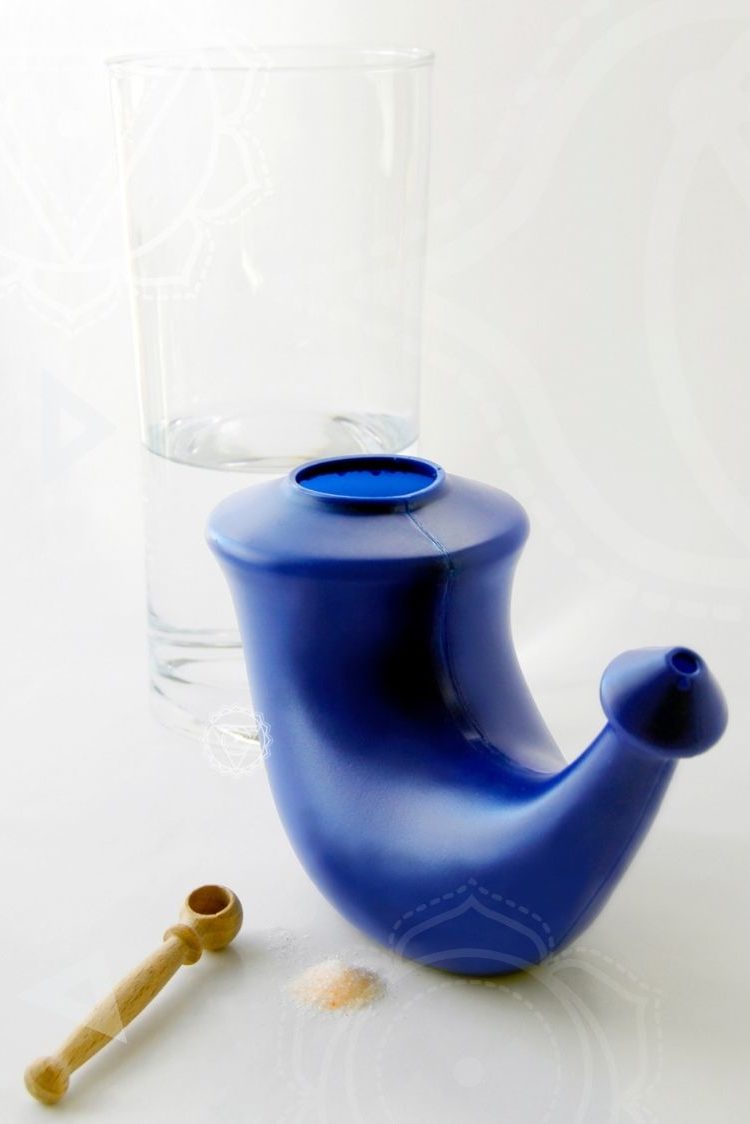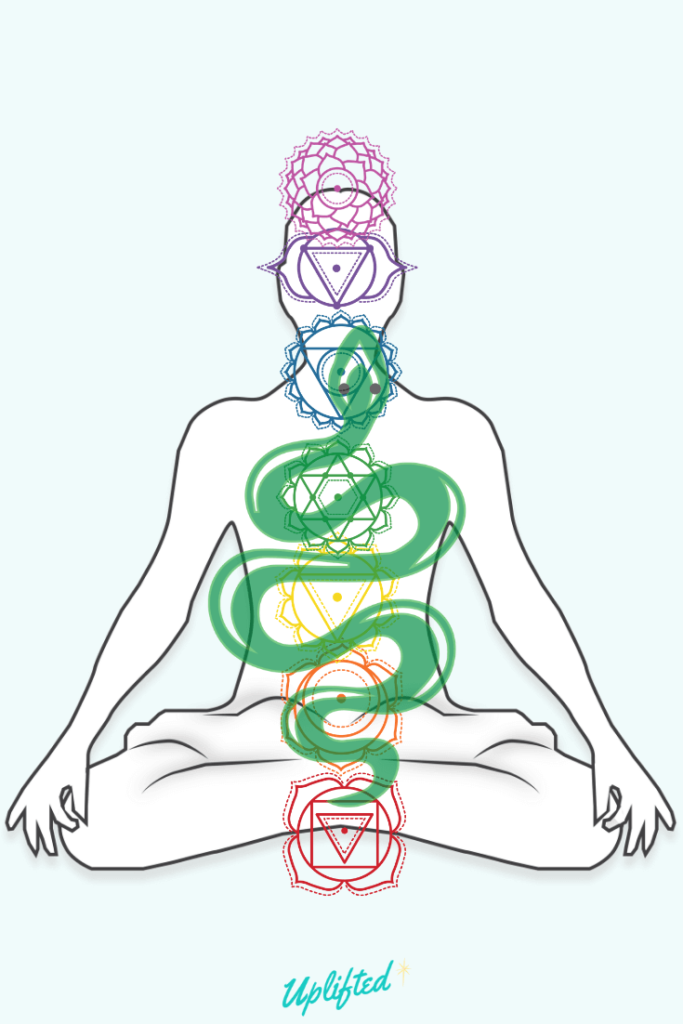
Cleansing practices seem to be all the rage right now! From juice cleanses to intermittent fasting; the idea of being able to detoxify and purify the body is EXTREMELY appealing. Especially with all the toxic chemicals and ingredients in foods and care products. Did you know that there is even a yogic practice for cleansing? And it’s not even a new thing. It’s a yogic cleansing practice that has been around for at least a few hundred years.
But what is it exactly? I’m so glad you asked.
What Is A Yogic Cleanse?
Great question! The simplest answer is: a combination of ancient practices designed to purify all aspects of the body using the breath, meditation, and physical modalities. I know, that’s not super specific, so let me tell you about shatkarma. Shatkarma is a yoga tradition written in the hatha yoga pradipika to cleanse the body and achieve optimal health. It is believed that practicing these methods regularly will keep you at your healthiest.
Although shatkarma is a specific set of techniques, in modern times there are many methods to detox and rid the body of toxins. Plenty of yoga retreats offer different methods of cleansing or there are all kinds of online courses you can find on different ways to cleanse the body. But there are reasons these yogic methods are still practiced today. Sure, they’ve been updated a bit to make them a little more accessible to all people, but clearly they work if we’re sitting here talking about them still today. And, I don’t know about you, but in a lot of the different cleanses I’ve looked up, they generally all hold at least one aspect of this set of actions. Meaning? Shatkarma is a recipe for success!
Now I bet you want to know exactly what these practices entail. Let me tell you, but first a couple of key terms:
- Kriya: This is often defined as the movements in kundalini yoga. Similar to “asanas” in vinyasa or hatha yoga. However, kriya is actually defined as a completed action to receive a specific result. For example, a “kriya for the liver.”
- Shatkarma: Shat, meaning six, and karma, meaning action: This is a group of cleansing, or purification, practices used in yoga. I’ll define all six, but when referring to the practice as a whole, all six components practiced together, shatkarma is the correct terminology. It is also sometimes called shatkriya.
- Yogic cleanse: A process in which you use your yoga practice and asanas to assist in further cleansing the body. Like using twists to stimulate abdominal organs to release toxins or healing pranayama to alter your heart rate and nervous system.
What Are the Shatkarmas?
Saucha or cleanliness/purity is an important limb of the yoga sutras. Shatkarmas are designed to purify the body in all aspects. From cleansing the digestive system and performing colonic irrigation, to pranayama and stress relieving techniques. It is a full body yoga detox.
- Dhauti (internal cleansing). One of the most common modern forms of this cleansing of the digestive tract is doing abdominal flapping. Similar to what your abdomen does during breath of fire. Not sure what that is? See my video: How To Do Breath Of Fire (Kapalabhati) Safely. Because dhauti is cleansing of the digestive tract, the quick snapping of the stomach back creates heat in the digestive system, stimulating abdominal organs to help move things along. A couple less common forms of this karma include vastra dhauti: consuming a piece of fabric believed to clean the stomach and then pulling it out after a few minutes and kunjal kriya: drinking salt water to the point of vomiting. Those last two should (obviously) only be done under professional supervision.
- Basti (yogic enema). Once the upper abdomen is cleansed (dhauti), you’ve got to clean the lower abdomen too right? Traditionally, to clean the elimination tract and large intestine ancient yogis sucked water up through their rectum and held it until the bowels released toxins completely. They used a technique you may know, mula bandha, to assist this process. Today, you can use an enema tube. Coffee enemas are actually increasing in popularity these days. This is believed to be beneficial in increasing energy levels and boost immunity. Please consult a health care professional before attempting any enema.
- Neti (nasal cleansing). You may have heard of something called a “Neti Pot” or seen it in stores. It’s basically a little pot that you fill with warm water and non-iodized salt that you then hold to one nostril with a tilted head, until the solution flows from the opposite nostril. The neti pot cleanses the nasal passages and sinuses helping with allergies, nasal congestion and colds. This is the most common, modern form of this cleanse, but you can also perform sutra neti, which is the practice of threading a catheter through one nostril down and out the mouth. Less common, but still taught in India. You should do that one under professional supervision of a yoga therapist. Learn more with this blog post. At-home neti pots are generally safe, and if you struggle to use a traditional neti pot. I found this nasopure neti pot super easy to use. I love it.
- Trataka (concentrated gazing). Probably the simplest (at least in concept) of the shatkarma; trataka is keeping your gaze on a fixed point, traditionally a candle, to slow your mind. You can stare at really anything you want, a picture, a black dot, or your favorite painting. The main purpose is to cleanse the mind of all the thoughts and processes continuously running through it.
- Nauli Kriya (abdominal massage). Abdominal massage, doesn’t that sound lovely? This practice stimulates the internal organs and massages them by basically rolling the belly. Pull the belly in on the right, roll to the center and then to the left ending with that section pulled in. Rotate both directions. It will kind of look like belly dancing once you’ve got a rhythm. It’s fun!
- Kapalabhati (frontal sinus cleansing). Now that you know what breath of fire is, you should understand how this one works. While the motion of the stomach activates and detoxifies the upper abdomen, the actual breath, that sharp staccato breath through the nose, cleans out your sinuses and releases impurities. Literally! I always keep tissues around after doing kapalabhati — it works!
Energetic Cleansing In Kundalini Yoga
Cleanliness is an important part of your yoga practice. It is one of the 8 limbs after all, remember saucha from earlier? But it’s not just about cleansing the body and mind, think of it in all aspects of your life. Like having a clean space to work in, or wearing clean clothes. Why is this important? Because it fosters positive experiences and leads you to santosha or contentment. Think about it this way, is there a better feeling than getting into a made bed with freshly clean sheets? It just shifts your energy and makes you feel calm and content. You want your outer space to mimic your inner space. With a clean space externally you open yourself up to better clear your energetic channels as well.
The Transformational Power of Kriyas
According to kundalini philosophy you have 10 bodies including your physical one. Kundalini yoga works to bring these 10 bodies into balance in an intense regulation of your energy channels. It combines physical movement with powerful breaths and sacred sounds to create chaos throughout the body. This shakes up blockages and allows your energy to flow more freely, bringing you to homeostasis much faster than a lot of other methods.
There are kundalini kriyas designed specifically for detoxification of the body, to aid in lymphatic drainage, stimulate the digestive organs and improve circulation. Want to learn more about kundalini and try some of these kriyas for yourself? Try my Kundalini Demystified Course.
Kundalini Awakening: The Ultimate Purification
As you know, kundalini yoga is a yoga practice to cleanse the energetic body. Energy moves around the body through nadis, or channels/pathways, all over the body. These nadis can get blocked or clogged similar to the build up in your alimentary canal with digestion or the lymphatic systems. So just like how you do physical cleanses to clear those pathways, kundalini yoga clears your energetic pathways to bring you balance.
This can lead to kundalini awakening, where your energy flows freely bringing you to your highest self and highest potential. You can read more about kundalini awakening, the specifics and how to achieve it in this blog post.
How Asana Detoxes the Body
Studies have shown that yoga detox, specifically shatkarma, enhances respiratory function, helps with general digestion and digestive disorders, improves sinusitis, and increases cognitive function. But detoxing isn’t just physical. You need to do mental and energetic detoxes too. Studies have also shown that kundalini yoga increases neurological health and reduces stress.
Start Your Yogic Cleanse At Home, Today
It is said that it takes 40 days to break a negative habit and create a new one. Practicing a kriya for 40 days straight will clear your energetic blockages and lead you to expansion. You can work on clearing the energy body and start adding in things to clear the physical body also. My 40-Day Kriya Program shows you how to accomplish this. It’s such an amazing practice, you don’t want to overlook it!
Now, take a few minutes to journal and think, “do I need a yoga detox?” And which of the practices discussed here do you want to focus on?
Signs You Could Benefit from A Yoga Detox
Signs you need a detox aren’t always just physical. They can be emotional, physical, spiritual, and energetic. And even if you feel your best, it never hurts to maintain that feeling by keeping the mind, body, and soul cleansed.
Signs you might need a cleanse could include:
- You feel like you can’t function without caffeine
- You are consuming a lot of alcohol
- Your digestive system feels off (bloating, upset stomach, irregular bowels)
- Constant sugar cravings
- Constant anxiety or feelings of dread
- Trouble connecting to your intuition or trusting yourself
- Headaches or poor circulation
Before & After Yoga Asana: Daily Detox Practices to Amplify the Effects of Your Practice
When you add cleansing techniques to your practice, you enhance your time on the mat. I know for myself personally, when I’m getting better sleep, drinking enough water, or eating more alkaline foods, I feel like my body can flow more easily. If you constantly have digestive issues, then you probably don’t want to go to your mat as often, or you don’t do the poses you really love or want to do. Cleansing the system so you don’t wake up feeling awful (or don’t feel yuck throughout the day) allows you to reap all the benefits of your practice more completely.
Here are some everyday detoxing practices you can add into your daily routine:
- Juicing – once a week replace your breakfast with fresh made juice, or add it into your morning routine on a daily basis.
- Clean your space! A clear space leads to a clear mind
- Try intermittent fasting(of course always consult your doctor first to make sure this practice is safe for you)
- Add more alkaline foods to your diet – lemons(throw it in your water), spinach, mango, parsley, avocado, green tea, sweet potatoes, the list goes on…
- DRINK MORE WATER!!!!!!!! Make it easy and bring a copper water bottle with you so you can take a sip every so often.
And there you have it! Remember, always consult your healthcare provider before making big changes or trying an intense cleanse. I hope you found this helpful!! Namaste!
Next Steps
- Take my History of Yoga Course to learn all about yogic principles and how they are applied to daily life!
- Order my Yoga Life book for a practical guide to applying yogic principles to your life and constitution.
- Check out my Yoga Philosophy knowledge hub for more inspiring content
- Join Uplifted for exclusive content that you can access right from the app. Take a deep dive into your practice with me this year!
Get 3 Free Training Vidoes from our Kundalini University Experience & Certification Program

YOU MIGHT ALSO LIKE
- What is Kriya Yoga? The Philosophy and Practice
- Uddiyana Bandha: Tapping Into Your Deep Core
- 4 Reasons Hasta Bandha Is Essential To Your Yoga Practice
- Vitarka Mudra: What It Is and How Do You Use It?
- Shakti Mudra: What It Is and How Do You Do It?
- Garuda Mudra: What It Is and How Do You Use It?
- Kali Mudra: What It Is and How Do You Do It?
- Shunya Mudra: What It Is and How Do You Do It?
- Varuna Mudra: What It Is and How Do You Use It?
- Vayu Mudra: What It Is and How Do You Use It?
- Samana Vayu: The Energy of Balance & How to Access It
- Apana Vayu: The Energy of Release & Surrender
- Udana Vayu: The Ascending Wind
- Prana Vayu: The Breath of Vitality
- Vyana Vayu: The Energetic Secret to Flow














